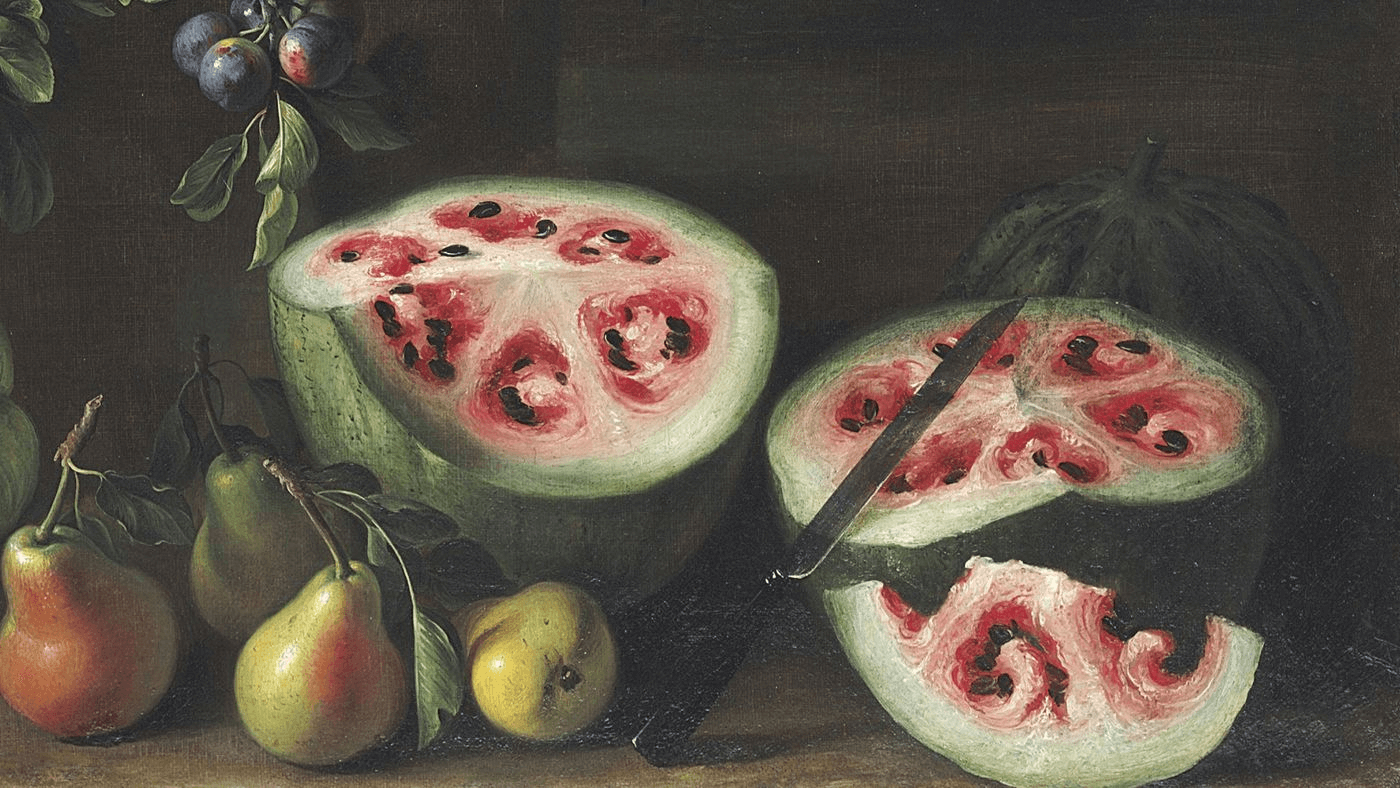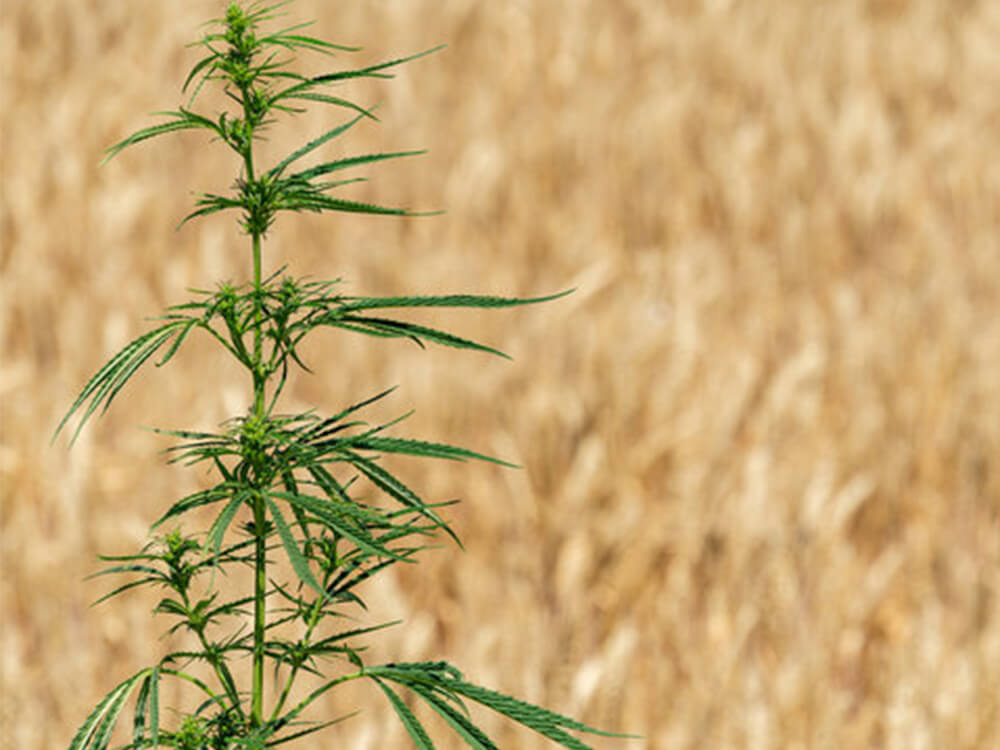Originally published at cannabis.net
What is cannabis ruderalis?
There are a ton of varieties of cannabis, some that will never be popular enough to come across and others that are found in every dispensary. Yet, some strains that would never be popular can make their way into daily use. This happens because these strains have a special trait that only becomes useful when they’re combined with something we use in daily life—think of how much watermelon has changed since the Renaissance.

A still life by Giovanni Stanchi—not nearly as delicious as the varieties we have today!
The same principle applies to cannabis—breeders have been focusing on specific cannabis traits for centuries, selectively breeding higher potency, more attractive smell, more attractive colorations, and even size. These new plants are technically genetically modified organisms (GMOs), but that term tends to carry a loaded connotation (since certain American companies create GMO plants that are resistant to pesticides and herbicides, ultimately lowering nutritional content and the rest of the not-so-great side effects we’re familiar with).
Cannabis that we know and love today is quite different from the cannabis of the ancient world (or even the 70s, just ask your parents)—it’s stronger, tastier, and all around a better quality plant.

Your grandad smoking hashish, probably. Smoking Hashish by Emile Bernard, 1900, courtesy Wikiart.org
Cannabis ruderalis is one of these varieties of cannabis that would have probably been lost to time if not for a special trait. Cannabis ruderalis originated in the Volga River Valley in Russia (most likely) but was first identified in Siberia in 1924. C. ruderalis has also been found throughout North America and central and eastern Europe; it wasn’t ever a strain that people were interested in until the 1980s when seeds of cannabis ruderalis were sent to the Seed Bank in Amsterdam.
Cannabis Ruderalis: Origin and Characteristics
Why Did CanThe Cannabis Ruderalis strain originates from regions of Russia, Central Asia, and Eastern Europe. It is a resilient variety capable of surviving in harsh environments. The name “Ruderalis” derives from the Latin word “rubble”, referring to its ability to grow like a weed on disturbed land. Ruderalis is believed to have evolved from Cannabis Indica varieties that adapted over time to the cold northern climates, gradually acquiring some unique characteristics
Ruderalis has a short stature, typically only 1-2 feet tall when fully grown. It has a sturdy, bushy structure with thick, short stems and broad leaves that are light green in color. One of its major traits is its autoflowering ability, where flowering is determined by age rather than changes in the light cycle, resulting in a faster growth cycle compared to other strains. While the buds of Ruderalis are small, they are dense and contain lower levels of THC than other varieties. This unique autoflowering trait, ability to adapt to harsh environments, and potential for hybridization with other strains make it an intriguing subject for research and cultivation, despite some debate over its species classification.
Why Did Cannabis Ruderalis Change Everything?
While growers observed C. ruderalis they noted a special characteristic: flowering based upon maturity rather than on light levels. cannabis ruderalis developed this trait naturally over millions of years of growing in northern regions where light levels throughout the year vary so drastically that plants must grow quickly or lose out on the energy available in those short summer months.
C. ruderalis takes advantage of this by having an extremely quick growing cycle, blooming in just a few weeks, so as to spread its pollen and seeds before the cold winter hits again.

C.ruderalis in a field. Notice how the yields are quite small.
Once this unique trait was identified, growers spent decades trying to successfully combine C. ruderalis with C. Indica and C. Sativa until they were able to develop strains that were suddenly more resistant to pests as well as not reliant on a photoperiod. Now, growers are able to speed through the growth cycle in just 10 weeks.
And while C. ruderalis has had a short history in the Western eye (and in cannabis culture at large), it has been used as a medicinal herb to treat headaches and pains for centuries because it is one strain with a higher CBD content than a lot of other varieties.
Currently, C. ruderalis is being used as a potential cancer treatment (obviously not to treat cancer itself but the side effects of cancer drugs), anxiety, and epilepsy. It is a fascinating strain with a long, unique history worth spending time reading about.
If you have any questions, please don’t hesitate to reach out to us!
And be sure to check out our other blog posts for useful tips on becoming a great grower!
Subscribe to the Vivosun newsletter for growing tips, grower stories, and special offers, and get 10% off your first order!
We love the new Vivosun Smart Grow System and we are certain that you too will love it once you try it.
And join our Facebook farmer’s community for even more exclusive contests and prizes!
Download Vivosun App to get 15% off and explore more information!







